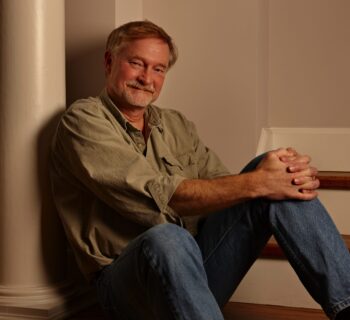
Erik Larson’s new book, Dead Wake, reconstructs the moments leading up to one of the Great War’s most shocking massacres: the sinking of the civilian-packed Lusitania by Germany’s Unterseeboot-20. It’s a bit of a departure for Larson, who hasn’t tackled mainstream history like this before—he recounts his criteria for what makes a great nonfiction novel below, and part of that is a lack of an existing discursive account—but he also couldn’t resist telling the epic story of the doomed British passenger liner.
Most of Larson’s previous books have focused on little-known but still-fascinating people, places, and events: “The White City” World’s Fair in Chicago and its architect, Daniel Burnham, as well as its predator, H.H. Holmes, America’s Jack the Ripper; William Dodd, America’s ambassador in Berlin leading up to World War II, and Dodd’s daughter, Martha; and Isaac Cline, Texas’s head meteorologist, who, before September 8, 1900, never would have believed a hurricane could cause untold devastation along the Gulf Coast.
This strategy of picking unknown but compelling stories and characters—along with intuitive storytelling and clean, crisp writing—has made Erik Larson into publishing’s undisputed nonfiction master. Here’s what he has to say to Rumpus readers.
***
The Rumpus: The Chicago Sun-Times once called you a historian with a novelist’s soul. What drew you to narrative nonfiction over other forms of professional artistic expression like novel-writing, painting, or anything, really? Do you practice other kinds of art when not writing bestsellers?
Erik Larson: Excellent question. My career has been kind of an evolutionary thing. I started at a small newspaper, then a big newspaper, with the opportunity to write long features and so forth. That was at the Wall Street Journal. Then I wanted to write longer things, more in-depth, and I started doing long freelance pieces after I left the Journal.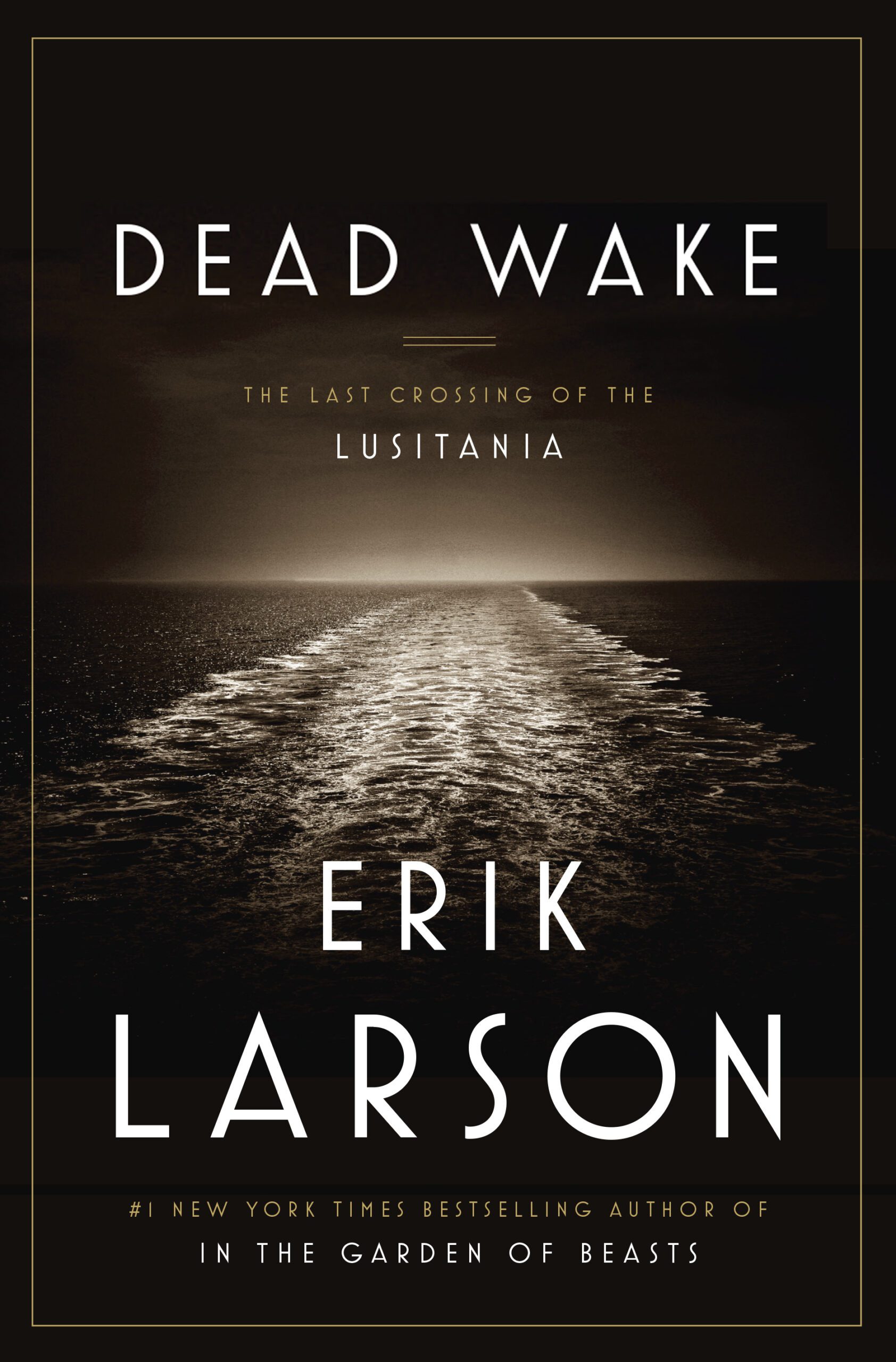 Those things kind of synced into writing a nonfiction book. In the interim, though, I did actually write something else.
Those things kind of synced into writing a nonfiction book. In the interim, though, I did actually write something else.
I have four more-or-less complete novels in the drawer in my Seattle office. But what I’ve realized—and at one point I had two of those under contract—I pulled them back, myself. Because I felt that they were really mediocre novels. They would’ve appeared at a time when my nonfiction career was on the rise. So it’s not that I haven’t wanted to do that or that I haven’t thought about it in the past. The reality is, now, I love this genre. I love doing so-called narrative nonfiction. It satisfies two elements of my personality. One is the digging part, the research, and the other is sitting down to tell the story. In a way, it’s easier, because history gives you what its got. You don’t have to make things up.
Rumpus: Do you think we’ll see an Erik Larson novel or is that something that’s not on the horizon?
Larson: I won’t say no. On the other hand, I have no immediate plans to do so. Having said that, during my last book tour I did write a novella—a ghost story novella. I may in fact run that out through my website, but I haven’t decided that, either. So there you go.
Rumpus: That sounds cool. So the next question builds on that—what drew you to narrative history as opposed to, say, narrative journalism? I know you’ve worked as a journalist for places like the Atlantic, the New Yorker, and Harper’s, and that you started your career at the the Bucks County Courier Times (not to mention you earned a Pulitzer nomination for investigative journalism at the Wall Street Journal). I’m wondering if we’ll ever see another Erik Larson book set in the very recent past—something like Lethal Passage or The Naked Consumer? Do you have any interest in that kind of thing anymore, or is the perspective offered by history more important?
Larson: Well, the present, again, I wouldn’t rule it out. It’d have to be very compelling to me on a number of levels. One reason I don’t want to write about contemporary subjects is because the shelf life is invariably much shorter than with a work of history. Contemporary subjects flare to life, stick around for a little bit, and then, typically, they’re done. One of the things that came to distress me about long magazine writing—long pieces—you do as much work for some of those pieces as you would for a book. And then the article persists for maybe a month. But maybe not even that. It gets read in the first week or so. Then it’s on to the next big thing.
But I’ve always had this deep interest in history. History is—when you have the luxury of looking into it as deeply as possible, it’s just interesting, just fun. And also, no small thing, I just deal with dead people. I don’t have someone calling and bitching at me. No lawyer on a conference call, you know?
Rumpus: Captain Turner isn’t going to call you up about your portrayal of him in Dead Wake.
Larson: No! Captain Turner would probably have called me and congratulated me.
Rumpus: Because you exonerated him?
Larson: Yeah. The Admiralty would have wanted to shoot me or something.
Rumpus: They’d be on all the talk shows denying they had anything to do with anything.
Larson: Oh, yeah.
Rumpus: Many of your books’ sources are newspapers, which is to say, history’s journalism. Is there a difference between journalism now and journalism then? Do you notice, say, the much-discussed decline of the American newspaper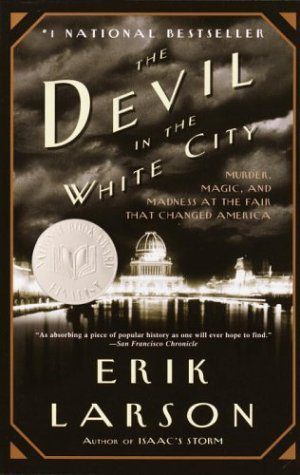 when you’re reading 1915’s Boston Globe next to a present-day issue? Or, even if it’s not a decline, what are the differences you notice between journalists’ styles then and now?
when you’re reading 1915’s Boston Globe next to a present-day issue? Or, even if it’s not a decline, what are the differences you notice between journalists’ styles then and now?
Larson: The book that I did that had the most intense research component was The Devil in the White City. I deliberately read part of every issue of the Chicago Daily Tribune from 1889 through 1993. Just to get a feel for the woof and weave of life in Old Chicago. I have to say, at least in that case, the reporting was very good. Very thorough. One thing that characterized old newspaper coverages was, if there was a trial, the paper’s coverage was as good as any transcript. There was a real effort to run the whole thing out. Testimony plus descriptive detail. Really a lovely combination. We don’t do that anymore, for sure. It’s a distillation of whatever needs to be in the story plus excerpts from the transcripts and so forth. That’s one very big difference between the old coverage and the new. Also, in old coverage, if something big happened, like the Lusitania, you’d have coverage on the first page, but you’d have it on the second and third page, too. We do that differently, too. When a big event happens, we cover the hell out of it now, also, but it is covered in a blanket way, with people trying to slip letters and all kinds of things into the coverage. All kinds of things.
But at the same time, it’s a continuum. Frankly, newspapers back in the day were just as unstable as they are now. The difference is they did not have to turn a profit for shareholders because they were privately held.
Rumpus: That’s interesting. They’ve always been a volatile business?
Larson: Yeah, it’s always been volatile. It was never meant to be anything more than an industry that turned a ten percent profit. To expect increasing profit and revenue to satisfy shareholders is insane.
Rumpus: I hadn’t thought of that, but it makes sense. Speaking of sources, what are some of the most interesting primary sources you’ve examined? Is it all telegrams and microfiche, or have you replayed, say, wax cylinders or old 35 mm films (there’s a film in Dead Wake)? What are some of the most interesting artifacts you’ve seen or examined during your research?
Larson: Yeah. That kind of thing is terrific. Newspapers for me are a starting point or a background thing. They’re useful for filling in the blanks between the things you find in primary sources like letters, diaries, archives, and so forth. But some of the more interesting things, for example, in the case of In The Garden of Beasts, Martha Dodd had had this affair with Carl Sandburg. I knew about it, of course, I’d read about it, but it only became real to me when I was going through Martha’s papers in the Library of Congress, and there, in one file, was a clear archival plastic envelope that contained two locks of Carl Sandburg’s hair. There it was. Proof positive. It was just fascinating. (A) Carl Sandburg’s hair really is—really was—very white. (B) It was quite coarse. I did reach in—I probably shouldn’t have—and touched it. So that was an amazing artifact.
Another thing in her file—there were lots of things in Dead Wake too—but in Dodd’s file there were 77 linear feet of her correspondence in the manuscript division. The first few files were packed with calling cards. It was sort of the social currency of the age. You gave somebody as a matter of course a calling card and then the butler brought it in and that’s how you were introduced. At first I was inclined to say, fine, calling cards. Then I thought, I should go through these. So I went through them one by one. Lo and behold I came across cards from all the people who we know today to be total and horrific beasts. Joseph Goebbels. Hermann Göring. Here were their cards. I’m holding a card from Joseph Goebbels. I’m holding a card that he held at one time and that Martha held at one time. There’s a bizarre little charge that goes on when you do something like that.
In the case of the Lusitania and Dead Wake, at one point, because I had to do all this European research, mostly in the UK, we rather illogically but not illogically based ourselves in Paris—because why not?—and I could take the tunnel to and from London (I hate to fly). I’m a paranoid flyer. One of the trips I took was up to Denmark. There’s a museum on the North Sea that has some artifacts from the submarine that sank the Lusitania. The conning tower sits out front on the lawn. It’s kind of rusty, it doesn’t look at all threatening, right? And then inside they have the actual deck gun. Very well preserved. Stands right there in the museum. Also, one day, when I was in the archives, one box came out, and inside that box was the actual codebook. One of the three main German codebooks the British had managed to get early in the war to get ahold of. The reason why they established this secret agency called Room 40.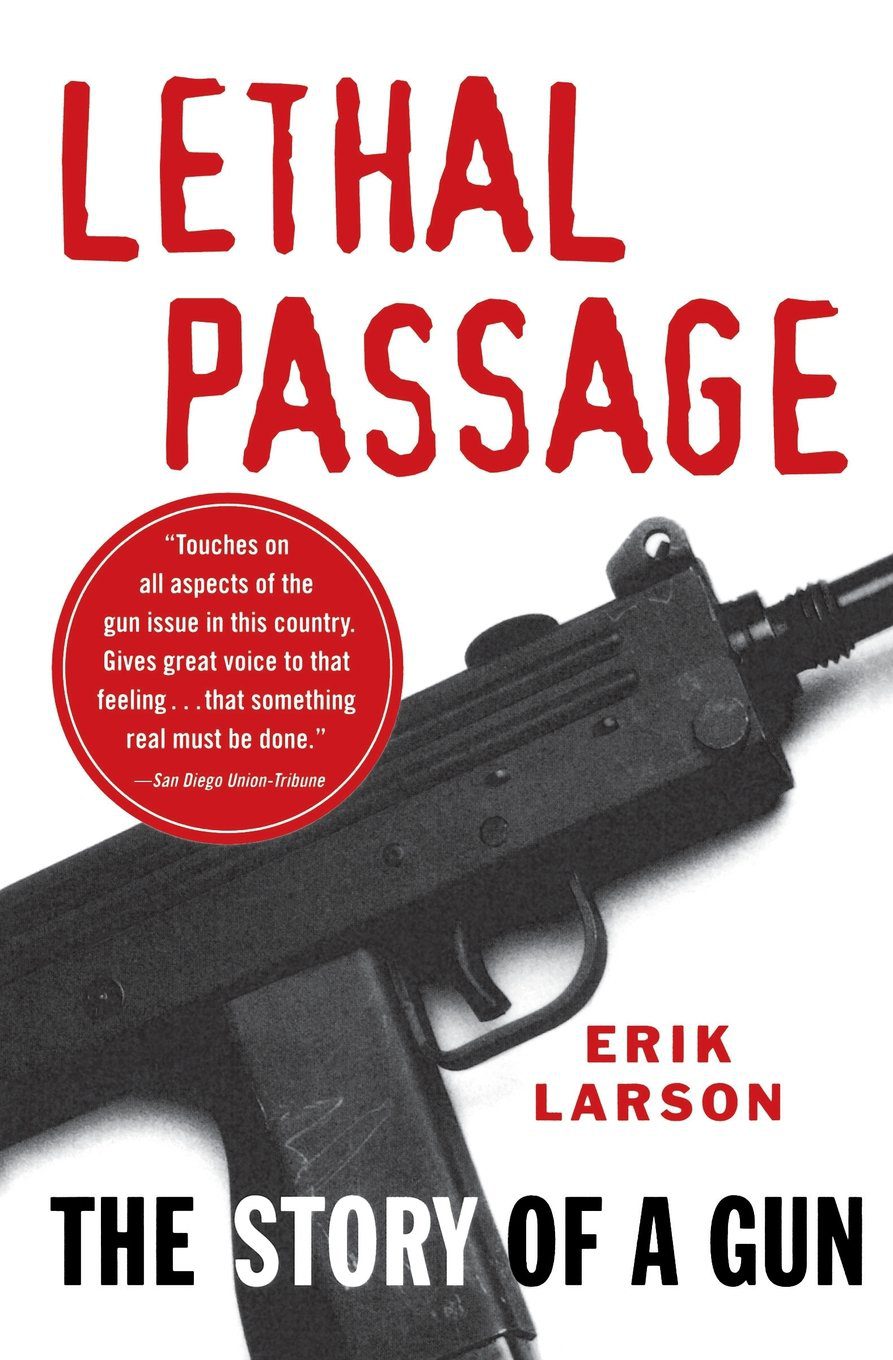 Here was the single most important of these—this giant codebook—and there it was. They said it was found in the arms of a dead German sailor after his Destroyer had been blown up by the Russians. Whether that’s how it came about, you know, no one can say. But here was this codebook. That was quite a nice moment.
Here was the single most important of these—this giant codebook—and there it was. They said it was found in the arms of a dead German sailor after his Destroyer had been blown up by the Russians. Whether that’s how it came about, you know, no one can say. But here was this codebook. That was quite a nice moment.
Rumpus: How do you approach research and writing on such a massive scale? Do you conduct all the research first, and then begin writing, or is it a more symbiotic relationship between the two? Do you scan documents with your phone?
Larson: It’s an arcane system, frankly. [Laughs] My m.o. is to go into an archive and photograph anything that looks like it might conceivably be useful. I don’t spend time reading everything in situ because it’s all about cost/benefit. If I go in and photocopy 1,000 documents and bring them home and read them I save a lot of money. Because if you’re going to read everything in the archive, then a one-week trip suddenly becomes a month-long trip. That’s expensive! I bring all that stuff home. I print it out. I have these vast stacks of documents and I go through them.
Anything that looks reasonably worthwhile on any level—I put on an index tab, so it’s marked. Each document pile has a name and a code. Then I put everything into a chronology. Say a certain fact from a certain archive collection will be in this chronology in about the place where it needs to be in terms of how things unfolded along with the code number of exactly where it is. Often I’ll put in just enough of the quote or fact to remind me why it was important. The result being a very long chronology. Single-spaced, the one for Dead Wake was 165 pages. And that’s got every valuable fact that I’ve collected in chronological order. This yields a de facto outline. Chronology is a basic element of storytelling. A beginning, a middle, and an end.
Rumpus: And then set to writing?
Larson: Then I set to writing. But I never have everything done before I start to write. It’s a goal to have everything, but it never quite works out that way. It’s just at some point you have critical mass and you really need to start writing the book. Nobody’s making you. You want to. It needs to get written. That’s when I start doing my one page a day thing. I finish the day off with research. One page becomes two becomes three becomes five. Then what I like to call the “Acceleration Effect” takes over. When you’re really rolling and coming toward the end of the book you can do ten pages a day. I don’t advise doing ten pages a day, though. Binge writing is a dangerous thing. But toward the end of a project it can make sense.
Rumpus: That’s interesting. You said binge writing is a dangerous thing. Can you elaborate on that?
Larson: Some writers—well, this is me, I feel that the hardest part of writing is getting up in the morning, sitting down, and starting up again. What some writers do, and unfortunately they tend to be writers with less experience, is, they’ll wait for inspiration. Then—when it strikes—ah! They’ll sit down at eight o’clock in the morning and write until five or six o’clock at night. They’re so happy. Have a drink, go to bed, wake up the next day—and there’s nothing left. A dry well. That is really hard.
So what I have disciplined myself to do—and this is my secret weapon—is even when things are going really well, I stop. In the middle of a paragraph, sometimes in the middle of a sentence. I just stop. It accomplishes two things. One: the next morning, when I sit down to write, I can be instantly productive by finishing that sentence. Or finishing that paragraph. But the really nice thing about the human brain is that it functions at all times on multiple levels. And the brain hates things that are incomplete. You go to bed that night, and even though you’re not really aware of it, your mind is processing that sentence or that paragraph.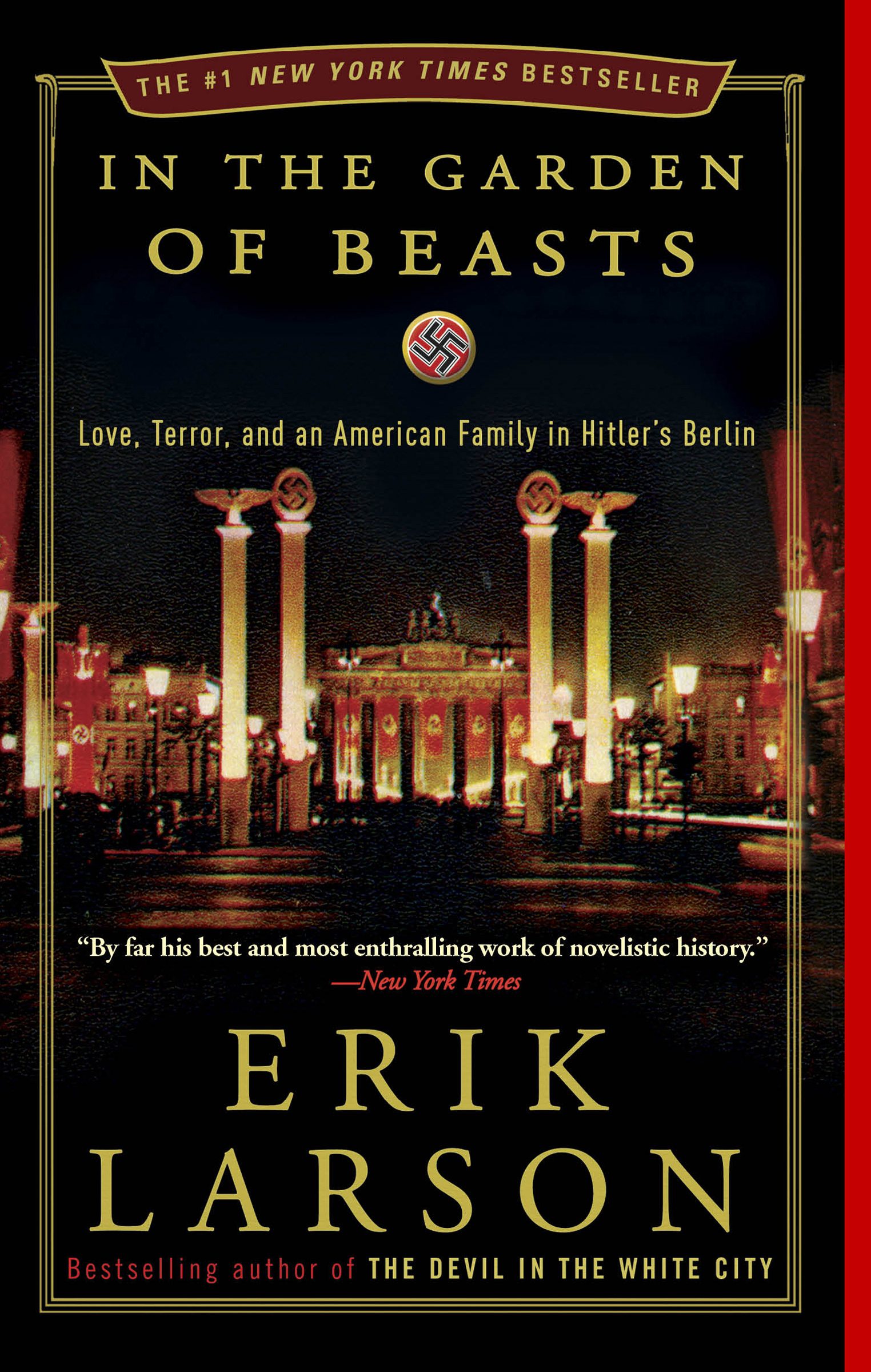 Your mind has not only finished that sentence but projected where the narrative needs to go. The next ten pages or two pages. It makes it infinitely easier to sit down in the morning and start up again when you have quit the day before at a high point.
Your mind has not only finished that sentence but projected where the narrative needs to go. The next ten pages or two pages. It makes it infinitely easier to sit down in the morning and start up again when you have quit the day before at a high point.
Rumpus: That’s interesting. Was that advice you learned somewhere in particular?
Larson: I have riffed on something that I sort of learned—that I came across in one of Graham Greene’s autobiographies. In that he talked about how whenever he was stuck he would read the passage the night before just before going to bed. And in the morning the problem was invariably solved. I took that and riffed on it a bit, maybe, maybe improved it by stopping in the middle of a sentence or paragraph every day. That’s my secret weapon.
Rumpus: So is this the kind of advice you’d give to your students when you taught at San Francisco State and Johns Hopkins?
Larson: Yeah, I taught from time to time. I taught at San Francisco State. Then I taught—one year or one semester at Johns Hopkins, I can’t remember. I’ll do various one-off weekends teaching, too, at graduate programs or whatever. But I’m not a full-time teacher anywhere.
But, yeah, when I teach I convey things like that, and chronology, the power of fact. I also talk about what’s necessary for an idea to actually be a viable book idea. Especially for a work of narrative nonfiction.
Rumpus: If I may ask, what does it take?
Larson: Yeah, yeah. I never set out looking for anything specific. It’s not like I want to tell a story about hubris or about failed dreams or anything like that. Those things are organic to whatever story I end up doing. I will write anything as long as it’s got key elements.
One is, obviously, I have to be interested. Two, it has to have a built-in, organic narrative engine or arc. That is to say it has to be something that lends itself to being told in the way I like to tell narrative nonfiction stories. Anybody can say, Hey, I’m going to write about the auto industry. But the question is, Fine, what’s the story? What’s going to make this compelling? What’s going to move the story along? Where’s the beginning, where’s the middle, where’s the end? But equally important—you can have a great narrative—my God, Ferdinand Magellan’s is a fantastic narrative—but the problem is there’s not enough of the fine-grained personal detail to tell that story in the way that I would want to tell it. That’s one other criteria. You have to have a deep, rich reservoir of primary materials. Letters, diaries, artifacts, and so forth, because that’s what makes a story come alive.
The way history used to be done, people read the books that had already been done, quoted the hell out of them, and quoted the newspapers, and called it a day. Classic scholarly research. Sort of meta-research, really. That’s fine. But it doesn’t lend itself to—it doesn’t let you write the kind of narrative history I like to write.
There’s another criteria. Every rule was made to be broken, and Dead Wake breaks this rule. I also like to find an idea that has barriers to entry. That’s an old Wall Street Journal term. I want an idea that is complex enough that I can be reasonably assured that no one else is going to do the same book. I hate competition. Truly. I really—the thing I most fear is publishing a book and having it suddenly be subject to the hell and life of the dual review. That is, where my book and somebody else’s book are reviewed together constantly. First of all, invariably one is found to be better than another, and you don’t want to be the worst of the two. I try to avoid that like the plague.
However, something like Dead Wake, the Lusitania, that’s low-hanging fruit! The thing there was, I was interested, I was compelled. The thing that tipped the balance was the fact that the anniversary was coming up.
Rumpus: It sank May 7, 1915—almost one hundred years ago, right?
Larson: Conception for that book was like five years ago. I was trying to find a reason to do the book and the anniversary seemed as good as any. As a former journalist, I’m always thinking about that—you want to write about this ship, why write about it now? The anniversary provided an answer to that. But there’s a danger there. If you’re doing that, you’re practically begging competition.
But in a sense those are my four criteria for what makes a good narrative nonfiction idea. It’s very hard to find ideas that fulfill all of those categories. It doesn’t have to be a big idea, like the Lusitania. It can be a small idea, like, frankly, The Devil in the White City.
Rumpus: My last question—you mentioned you read widely and indiscriminately between books, so I assume, as you promote Dead Wake, you’re turning pages in some interesting books. 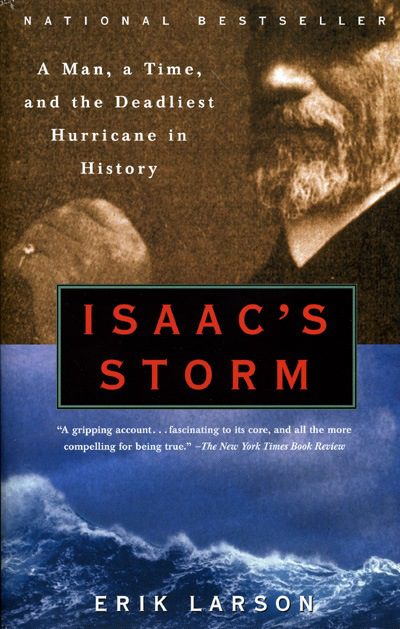 What do you plan to read before you start a new project—is there a list, or is it more organic? Also, what are some of the craziest, off-the-wall books you’ve ever read?
What do you plan to read before you start a new project—is there a list, or is it more organic? Also, what are some of the craziest, off-the-wall books you’ve ever read?
Larson: I can’t tell you what I’m reading now because then I would tip you to what I might possibly be doing for my next book.
Rumpus: No spoilers!
Larson: No spoilers. But that’s just in the very, very early stages of conception. It may or may not be something I’m going to work on. The best example of what I’m talking about is, when I’m back in Seattle, if I am high and dry, whenever I finish a book, I start fresh. No ideas are left from my previous search for a book idea. You know, every search for every book idea I keep a journal. I just write down ideas, thoughts, titles. Then I have like five potentially viable ideas. I choose one. Something happens to the other four. They just kind of wither and die.
One or two might see resurrection at some point. I don’t know. The ones that rattle around waiting for a change of contemporary scene. What I will do when I get to the idea phase is I will go into my favorite Seattle library—which is the Suzzallo Library at the University of Washington—this is one of the beauties of open-stack libraries—I love open-stack libraries—I go in, and I go up to the 900 level, where the history is, where the good history is. For me that’s 1890 to 1920. Of course Garden of Beasts was an outlier there. But for me that’s the sweet spot. 1890 to 1920. Then I’ll pull books at random from the shelves. I’ll take a look, read the first pages, and then put it back. Find the next book, read the first couple of pages, and then maybe I get a book I take home and read entirely.
I hasten to add that that process of pulling books randomly off the shelves has never yielded a viable idea! [Laughs] But—but—who’s to say that something in one of my other books wasn’t sparked by that reading?
Rumpus: Is there anything you’d like to add before we wrap up the interview—anything you’d like to leave readers with?
Larson: Just this. I always try to get across that my primary goal as a writer is not to inform, necessarily. My primary goal is to produce as rich a historical experience as I possibly can. So readers can sink into the past and feel like they’ve spent some time there. That they’ve lived another life, however briefly.
***
Author photo © Benjamin Benschneider.




